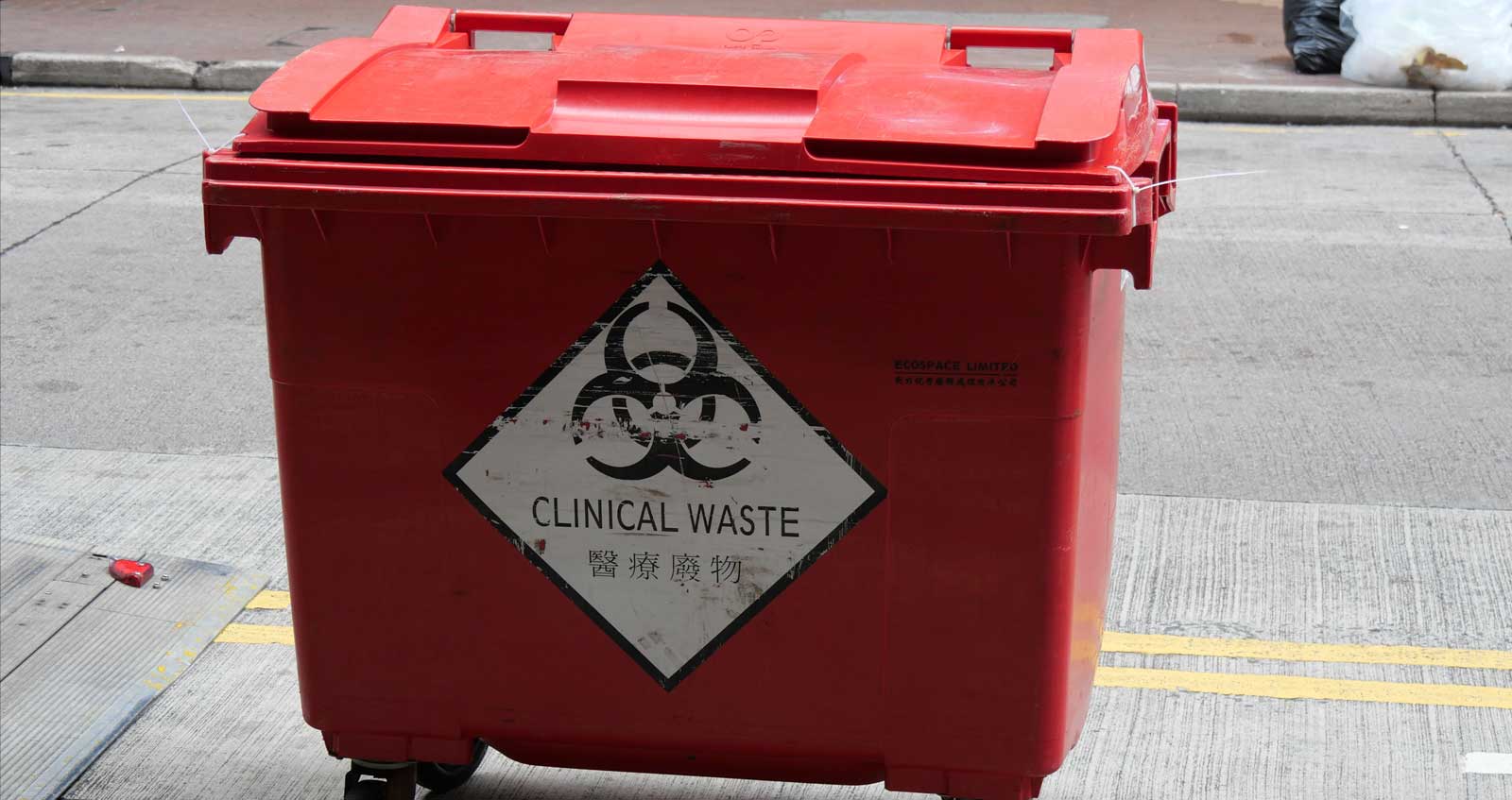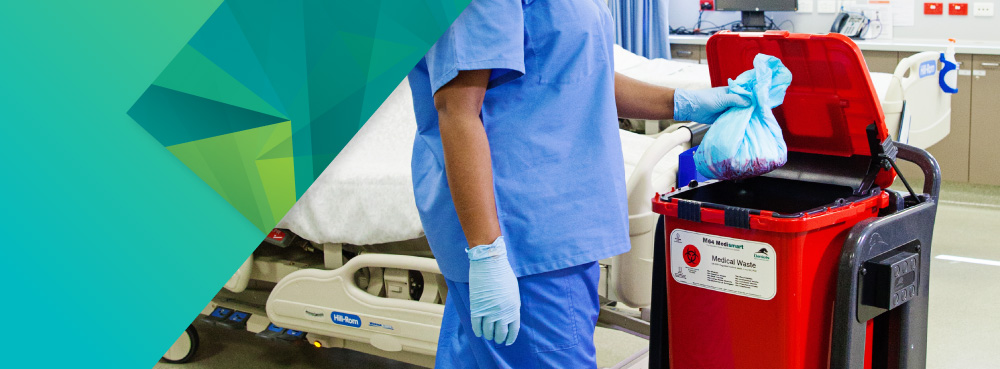Community Treatment: Seamless and Reliable Medical Waste Removal Near Me
Remain Ahead of Regulations: Expert Suggestions on Medical Garbage Disposal
In a globe where the healthcare industry is constantly developing, it is important for medical centers to remain ahead of policies when it comes to the appropriate disposal of medical waste. From comprehending the different categories of medical waste to applying the best collection and partition techniques, this discussion will certainly give actionable pointers and useful insights to aid facilities remain ahead of guidelines in the ever-changing landscape of medical waste disposal.
Comprehending Medical Waste Categories
Comprehending clinical waste categories is crucial for proper disposal and management in health care centers. Clinical waste describes any waste created by health care activities that may position a hazard to public health and wellness or the environment. It is essential to categorize medical waste properly to guarantee its secure handling, therapy, transport, and disposal.
There are a number of groups of clinical waste that healthcare centers need to be familiar with. The most common classifications include infectious waste, pathological waste, sharps waste, pharmaceutical waste, and chemical waste. Each classification has specific standards and guidelines for its correct administration and disposal.
Infectious waste includes materials contaminated with blood or various other bodily liquids, such as gloves, dress, and lab cultures. Pathological waste refers to human tissues, organs, or body parts that require special handling and disposal. Sharps waste includes used needles, syringes, and other sharp things that can trigger injury and transfer infections. Drug waste makes up ended, unused, or infected drugs that require careful handling and disposal. Chemical waste includes solvents, anti-bacterials, and various other chemical materials utilized in healthcare centers.
Staying Up-To-Date With Regulatory Adjustments
Remaining current with governing modifications is crucial for health care centers to guarantee compliance and correct management of clinical garbage disposal. medical waste removal near me. With guidelines frequently developing, it is crucial for healthcare centers to remain up-to-date to avoid fines, penalties, and possible harm to the atmosphere and public wellness
To remain in advance of regulative modifications, medical care facilities should establish a system for tracking and monitoring updates. This can be done by subscribing to regulative e-newsletters, participating in workshops and conferences, and proactively joining market associations. Furthermore, facilities should designate a personnel or team responsible for remaining educated and sharing details to relevant stakeholders.
Regular communication with regulative agencies is additionally crucial. Health care centers must develop relationships with regional, state, and government agencies to guarantee they understand any changes in laws that may influence their waste management techniques. This can be done through routine conferences, involvement in public remark durations, and proactive engagement with governing companies.
Additionally, healthcare centers ought to take into consideration partnering with waste administration firms that focus on medical garbage disposal (medical waste disposal services with WasteX). These firms are often fluent in the current guidelines and can give advice and assistance to make certain compliance
Carrying Out Correct Collection and Segregation Approaches
To successfully manage clinical waste disposal, health care facilities need to establish appropriate collection and segregation techniques in accordance with regulatory guidelines. Executing these methods makes sure the secure handling and disposal of possibly dangerous materials, safeguards the setting, and minimizes the risk of infections and injuries to healthcare employees and the public.
Appropriate collection and segregation approaches involve the usage of marked containers and labeling systems. Medical care facilities must provide plainly labeled containers for various kinds of clinical waste, such as sharps, transmittable waste, pharmaceutical waste, and non-hazardous waste. These containers must be color-coded and clearly marked to stay clear of confusion and advertise easy recognition.
Furthermore, healthcare centers must educate their staff on the proper procedures for gathering and setting apart clinical waste. This includes educating them on the various sorts of waste, the proper containers to use, and the relevance of adhering to laws and standards. Normal training sessions and refresher courses must be carried out to make sure that team member continue to be up-to-date on ideal practices.
Moreover, medical care centers must establish a system for normal collection and disposal of clinical waste. This may involve partnering with licensed waste monitoring business that specialize in medical waste disposal. These companies will certainly ensure that the accumulated waste is carried and gotten rid of in conformity with regulative requirements.
Choosing the Right Disposal Techniques

Incineration is one of the most usual and effective techniques for taking care of certain kinds of medical waste, such as pathological waste and sharps. It includes the regulated combustion of waste at high temperature levels, reducing it to ash. Incineration can release harmful contaminants into the air and add to air contamination.

Chemical treatment involves the use of chemicals to counteract the waste and sanitize. Microwave therapy makes use of microwave power to warmth and decontaminate the waste.
Ensuring Conformity Via Documentation and Training
After thoroughly thinking about the appropriate disposal techniques for clinical waste, healthcare facilities have to make sure conformity with policies and lessen ecological effect by implementing efficient documents and training treatments. This step is essential in sites keeping a lasting and risk-free environment for both medical care workers and the public.

Healthcare workers that take care of medical waste must obtain suitable training on waste segregation, handling, and disposal procedures. By giving detailed training, healthcare centers can equip their personnel to make educated decisions and minimize the threat of improper waste disposal.
Final Thought
Finally, remaining ahead of regulations in clinical garbage disposal is critical for healthcare centers. medical waste removal. Recognizing the different categories of medical waste, staying updated with regulatory adjustments, applying appropriate collection and segregation methods, picking the ideal disposal techniques, and guaranteeing conformity with documentation this content and training are all necessary steps. By complying with these guidelines, health care companies can properly dispose and handle of clinical waste in a accountable and risk-free manner
From comprehending the different classifications of clinical waste to carrying out the right collection and segregation techniques, this conversation will supply important insights and workable suggestions to aid facilities stay in advance of guidelines in the ever-changing landscape of medical waste disposal. - medical waste disposal services with WasteX
The most common classifications consist of infectious waste, pathological waste, sharps waste, pharmaceutical waste, and chemical waste. Medical care centers must offer clearly labeled containers for different types of medical waste, such as sharps, contagious waste, pharmaceutical waste, and non-hazardous waste. Health care centers need to establish read a thorough system to tape and track all elements of medical waste disposal, including kinds of waste produced, amounts, and disposal methods utilized. Healthcare workers who manage clinical waste needs to get appropriate training on waste segregation, dealing with, and disposal treatments.